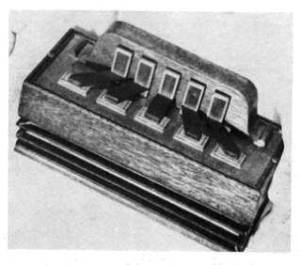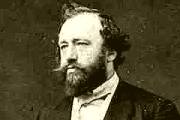Cyril Damian
#1

Posted 25 June 2005 - 12:42 PM
http://accordionsonly.com/faq.htm
"What is it? The piano accordion is a 'free reed' instrument, in a family that also includes the melodeon, button accordion and harmonica. The earliest accordion was patented by Friedrich Buschmann of Berlin (who also developed the harmonica) in 1822, and the first manufactured accordion was produced in 1829 under the patent of Cyrill Damien, an Armenian living in Vienna."
http://www.newschool...i?area=pianoacc
"Here we arrive at a knotty disagreement. Who first collided bellows, reed, and keyboard? Some hold with Cyril Damian, an Austrian of Armenian origin who lived in Paris. The Italians, however, say Damian was nothing less than Italian, while the Germans say his origins and final destination are irrelevant because he did his best work in Berlin. Others award the signal honor to Friedrich L. Buschmann, a Berliner. My money is on Friedrich, who has the name of a man who would invent the accordion."
http://www.bc.edu/pu...5/prologue.html
"The patent for the accordion was filed in Vienna in 1829 by Cyril Damian, an Armenian manufacturer. His "Akkordion" was an improvement over the "Handaoline" invented by the German, Buschmann. The first accordions had six melody buttons and two bass buttons. In subsequent versions, extra buttons helped to produce a wider variety of notes and chords. The piano accordion was developed in the 1850s, mainly in Italy."
http://www.virtualmu..._txt06a_en.html
#2

Posted 27 June 2005 - 03:33 PM
#3

Posted 24 November 2009 - 01:25 PM

#5

Posted 26 August 2023 - 01:28 PM
Հեռավոր 16-րդ դարում Կիլիկիայի թագավորության տարածքից հայ ընտանիքներ գաղթեցին Ռումինիա և հիմնադրեցին այնտեղ Արմենոպոլիս քաղաքը։ Այսօր այն կոչվում է Գեռլա։ Ժամանակի հետ նրանցից շատերը ուղղակի ձուլվեցին ռումինական մշակույթին․․․
Այսպես, 1829 թ-ի մայիսի 6-ին Վիեննայում Գեռլայի բնակիչը հայտարարեց, որ ինքն իր որդիների հետ հայտնագործել է բոլորովին նոր նվագարան։
«Ընդամենը մեկ կոճակով կարող եք մի քանի ակորդներ նվագել։Կարող եք մարշ նվագել, կամ արիաներ․ դրա համար երաժշտական հատուկ կրթություն չի պահանջվում։ Բացի դա, այն շատ կոմպակտ է և ճամփորդությունների համար նախատեսված»։ - այսպես էր նկարագրում իր ստեղծած նվագարանը գյուտարարը Գեռլայից․․․
Մինչ նրա հայտնագործությունը Եվրոպայում մեծ հեղինակություն ուներ շրթհարմոնը, իսկ Գեռլայի բնակչի գյուտից հետո շրթհարմոնն անցավ պատմության ներքնահարկ․․․
Դեմյանների վարպետական տոհմից սերող Կյուրեղ Դեմյանը ծնվել էր 1772թ-ին Արմենոպոլիսում։ Ցավոք սրտի այս վարպետի մասին ինֆորմացիան շատ սուղ է, երևի՝ ռումինական արխիվներում կգտնվեն դրանք․․․
Ամուսնանալուց հետո Կյուրեղ Դեմյանը տեղափոխվում է Վիեննա և անյտեղ բացում է իր փոքրիկ արհեստանոցը, որը հետո հայտնի է դառնում ողջ Եվրոպայում։
Երկար տարիներ չարչարվելով գծագրերի վրա, տարատեսակ գործիքներ ստեղծելով ու հետո դրանք վառելով՝ վերջապես հասնում է իր ուզածին, և 1829թ-ին Կիրիլ «Դեմյան և որդիներ» արհեստանոցի անունից նոր երաժշտական գործիք ստեղծելու հայտ է ներկայացնում։ Ընդամենը երկու շաբաթ անց՝ 1829թ-ի մայիսի 23-ին նրա գյուտը պաշտոնապես ընդունվում է։ Ակորդների շատության համար, գործիքը կոչում են ակորդեոն և մայիսի 23-ը այդ օրից տոնվում է որպես ակորդեոնի ծննդյան օր։
Դեմյանի նվագարանն ուներ ընդամենը հինգ ստեղներ, որոնք նախատեսված էին միայն ձախ ձեռքի համար։ Ամեն մի ստեղնի համապատասխանում էր մեկ ակորդ։
1831թ-ից արդեն, ակորդեոնը տարածվեց Բրիտանական կղզիներում, իսկ ևս երկու տարի անց Ադոլֆ Մյուլլերը իր «Ակորդեոնի դպրոցը» գրքում արդեն տալիս էր նվագարանի մեծ թվով տարբեր տեսակների նկարագրություններ։ Արդեն 1840-ականներին հին աշխարհի բնակիչները գաղթելով Ամերիկա՝ ակորդեոնը տարածեցին ԱՄՆ-ում, որտեղ ևս շուտով լայն ճանաչում ու ժողովրդականություն ձեռք բերեց։
Իսկ Կյուրեղ Դեմյանը դարձավ Եվրոպայի հայտնի վարպետ՝ նրա ընկերությունն արդեն արտադրում էր ռոյալներ, դաշնամուրներ, երգեհոններ, իսկ նրա՝ երաժշտական գործիքների վերանորոգման և դրանց մասերի արտադրության ֆիրման ամենամեծն ու ճանաչվածն էր Եվրոպայում։ Դեմյանն իր որդիներ Կարլի և Գվիդոնի հետ հիմնեց նաև ակորդեոններ արտադրող առաջին ֆաբրիկան Եվրոպայում։
Տոհմական վարպետների, Կիլիկիայի ճյուղից՝ ճանաչված վարպետ Կյուրեղ Դեմյանը, մահացավ 1847թ-ի նոյեմբերի 1-ին Վիեննայում՝ գործն ավանդելով որդիներին․․․
Այսօր Վիեննայի Երաժշտության տանը պահվում են Կիրիլի պատրաստած մասերի և աշխատանքների նմուշներ, ինչպես նաև՝ աշխարհում առաջին ակորդեոնը։
Ահա թե ինչ էր պետք պատասխանել դրանց, սիրելի կրկնօրինակիչներ։
Նկարում՝ ակորդեոն ստեղծող Կյուրեղ Դեմյանը (Cyrill Demian)
Эдуард Манвелян
#6

Posted 26 August 2023 - 01:28 PM
#7

Posted 26 August 2023 - 01:32 PM
i did post about him. i just can't find it
![]()
#8

Posted 26 August 2023 - 01:36 PM
https://akkordeon-mu...iel-akkordeon1/
AKKORDEON MUSEUM – "Sammlung historische Handharmonika 1830 – 1945"
Kontakt: Beat Zimmermann, 4936 Kleindietwil, SCHWEIZ Switzerland
#10

Posted 26 August 2023 - 02:34 PM
#12

Posted 26 August 2023 - 02:36 PM
https://en.wikipedia...<br> <br> <br> Cyrill Demian (Arm. Կյուրեղ Դեմյան) (1772–1849) was an Austrian inventor of Armenian (Armenopolis) origin, who made his living as an organ and piano maker with his two sons, Karl and Guido, in Mariahilfer Straße No. 43 in Vienna, Austria. On May 6, 1829, Cyrill and his sons presented a new instrument to the authorities for patent - the accordion. The patent was officially granted on May 23, 1829.[1]
The construction of Demian's accordion
(Translated from the original German manuscript)
In popular culture
In the comic strip Garfield, Jon states that Demian is his hero.[5]
#13

Posted 26 August 2023 - 02:38 PM
1 user(s) are reading this topic
0 members, 1 guests, 0 anonymous users


















